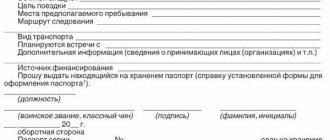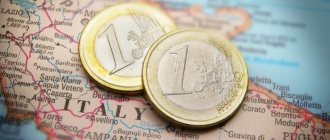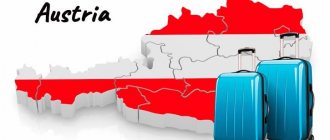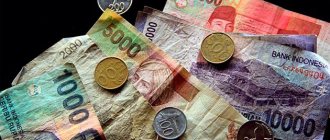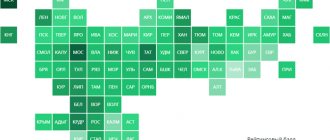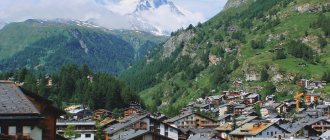Countries by standard of living: is the quality of life index so important?
The quality of life index is a rating of the standard of living of the population in the country, which is based on the analysis of 9 indicators:
- Health
- Family life
- Public life
- Material well-being
- Political stability
- Geography and climate
- Job Guarantee
- Political freedom
- Gender equality.
The quality of life index (QLI) is a kind of indicator of life. And the higher it is, the better and more convenient the country is to live in. Basically, countries with a high standard of living are characterized by a high life expectancy of the population (due to a high-quality healthcare system), have good indicators of political and financial stability, low levels of crime and environmental pollution, and are characterized by stable incomes of citizens.
Best countries by standard of living in 2021: TOP 10
According to the 2021 Quality of Life Index, the top ten included 7 European countries and 2 Pacific countries. Unlike last year, the ranking of countries by standard of living is headed by the same countries, but with minor changes - Estonia left the top, and Norway entered instead. According to the Numbeo global database, the TOP countries to live in 2021 are as follows:
1st place – Switzerland (IQR – 190.82). Switzerland is considered one of the countries with the best level of medicine in the world. The average life expectancy of its citizens is 83 years. This is a state with a stable and prosperous economy, financial and banking system, high level of education and career prospects. But real estate and the cost of living here are among the most expensive in the world.
2nd place – Denmark (IQL – 190.01). Denmark has a transparent and stable political system, a progressive taxation system, and free and high-quality healthcare. According to a UN report published in the spring of 2021, it is also among the TOP 3 happiest countries in the world. Denmark is considered the safest place to live, occupies a leading position among European countries in the ranking of doing business, and there is almost no corruption here. But although the level of wages of the population is high, the cost of living itself is one of the most expensive in the world.
3rd place – the Netherlands (IQL – 183.31). The Netherlands is distinguished by its tolerance, democracy and stable economy. It is quite easy to run a profitable business here, there is no corruption and a transparent taxation system. The level of medicine in this country is higher than in France or Germany, and a higher education diploma is highly valued outside the state.
4th place – Finland (IQL – 182.79). Finland is the happiest country according to the UN report mentioned above. It is included in the TOP 10 richest countries in Europe, has a high level of social security, legal transparency, security and economic development. However, bureaucracy and corruption are present in Finland. It is also quite expensive to live in, but it is often chosen as a second home by people from the post-Soviet countries.
5th place – Austria (IQL – 182.37). Thanks to its diverse economy, Austria offers extensive employment and business opportunities. It is among the TOP 5 countries in terms of medicine and safety. It occupies a leading position in terms of the level of tourist flow: it has beautiful nature and many attractions. It is also important that in many political disputes at the global level, Austria adheres to neutrality.
6th place – Australia (IQR – 181.52). Australia is a country with a strong economy, favorable climate and clean environment. There is practically no corruption here, a stable legal and judicial system. The level of higher education is one of the highest in the world, and the tax system is more flexible compared to other European countries.
7th place – Iceland (IQL – 179.10). Iceland is the safest country in the world. There are high salaries and many different vacancies, and finding a suitable position is not difficult even for visitors. Iceland is distinguished by its social model of society, its population is very tolerant in many matters, and its unemployment rate is low. The downside is that the variety of products in this country is in short supply, and their prices are high.
8th place – Germany (IQL – 176.76). Germany is one of the leading countries of the European Union with a thriving economy. This country has an effective social security system, a stable political system, and deeply respects democracy. There is a high standard of living here due to decent working conditions and salaries, quality medical services and accessibility to education.
9th place - New Zealand (IQL - 175.77). New Zealand is the second safest country in the world after Iceland. In 2021, it ranked first in the ranking for ease of doing business, and almost 70% of visitors are immigrants looking for work or starting a business. There are minimal taxes, there are no social and medical contributions, and the cost of living is relatively low.
10th place – Norway (IQL – 173.57). Norway is one of the three happiest countries in the world. It has transparent laws, a developed economy, some of the highest salaries in the world and low unemployment. For the rich segments of the population, taxes are quite high, which finance the education and health care systems.
How are countries ranked by standard of living and what does it mean?
The standard of living is not so easy to calculate; scientists study human needs - physiological (nutrition), intellectual (spiritual sphere) and social (social activities). The whole thing is called the Human Development Index (HDI). Climatic conditions and ecology are also taken into account. The level of security, freedom of enterprise, and quality of education are also important criteria when compiling the rating. Since 1990, the UN has been publishing a special report that contains detailed information about the quality of life of people in various countries around the world.
The tools for determining the standard of living of the population were invented in the countries of the civilized world, and therefore the states at the bottom of the list do not always agree with their position in the ranking. This, in particular, explains the fact that the ranking of countries by standard of living may not coincide with the ranking of happiness level: for example, Costa Rica, which is in 63rd place in terms of living standards, ranks 13th in the world in terms of happiness - the residents of this country They feel happy, although by European standards they lack libraries. By Costa Rican standards, what they have is enough for them.
Quality of life in countries according to world rankings: who is the best?
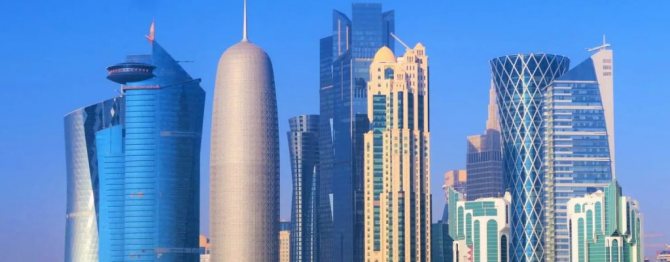
There are several more ratings that form the TOP countries based on other indicators:
- Rating by level of human development (human development index - HDI).
- Ranking by GDP per capita.
- Rating of the richest countries in the world.
Rating according to the level of human development. This rating is compiled annually by experts from the United Nations Development Program. It has existed for more than 30 years and is a kind of assessment of the progress of 189 countries. This rating is quite authoritative; it also takes into account many areas of life in countries - from healthcare to resource consumption and emissions into the atmosphere. What is typical is that although this rating is published at the end of the year, the data analyzed by the expert compilers is taken from last year. According to the latest published ranking in the Human Development Report, the list of countries by standard of living is as follows:
- Norway
- Ireland
- Switzerland
- Hong Kong
- Iceland
- Germany
- Sweden
- Australia
- Netherlands
- Denmark.
As we can see, according to the Human Development Index, countries that do not occupy leading positions in the living standards ranking described above have high HDI. In turn, the leading countries in terms of HDI have a low HDI. It also included other European countries - Sweden and Ireland, as well as the special administrative region of China - Hong Kong. Rating by GDP level. This rating is compiled by the World Bank based on statistical reports and does not take into account the spheres of life of the country. But it forms the TOP countries with the highest GDP (gross domestic product). In simple words, it shows the level of countries depending on the total cost of all services and products produced by the state. The GDP level is an important economic indicator. He talks about the stability of the country’s currency, the demand for services and goods, and the scale of the economy. According to the ranking by GDP level, the TOP 5 countries are as follows.
- USA (GDP – 20.494 trillion US dollars).
- China (GDP – 13.608 trillion US dollars).
- Japan (GDP - 4.970 trillion US dollars).
- Germany (GDP – 3.966 trillion US dollars).
- Great Britain (GDP – 2.825 trillion US dollars).
Rating of the richest countries in the world. But there is also another branch of this rating - the level of GDP per capita. These countries can rightfully be called the richest. Here the numbers and places look different, so he is the one who can speak more objectively about the standard of living in the country. The richest countries in the world are a separate column in measuring the level of quality of life. Most of them are Asian; the TOP itself includes few European countries, and states such as the USA, Canada or Japan occupy places below tenth. This ranking is headed by a small country in the Middle East – Qatar. GDP per capita is 138.9 thousand US dollars. It has held a leading position in this ranking for several years in a row. Next in the ranking after Qatar is Macau with a GDP of 113.4 thousand US dollars. The small European country of Luxembourg with a GDP of 112 thousand US dollars closes the top three. The TOP 10 richest countries in the world are as follows:
- Qatar
- Macau
- Luxembourg
- Singapore
- Ireland
- Brunei Darussalam
- Norway
- UAE
- Kuwait
- Switzerland.
Human Development Index taking into account inequality
Although the HDI indicator is useful for showing the level of human development in countries around the world. Since 2010, the UN has separately calculated the Human Development Index, adjusted for the inequality of people in the country. Thus, the UN announced that the standard HDI indicator is an indicator reflecting human development potential, that is, the maximum possible index that could be achieved in a particular country if there were no inequality in it.
As for the inequality-adjusted HDI , it characterizes the “average” person in a country, taking into account inequalities in health, education and income. Depending on the level of inequality in a country, the inequality-adjusting HDI can differ from the main HDI by up to 40%. It is important to note that the Human Development Index, taking into account inequality, is not calculated for all countries, but only for those that have objective data on inequality. As of 2021, this is 151 countries out of 189 studied by the UN.
Rating of countries by poverty level: where you definitely don’t want to go to live
Paradox or not, most of the population of the countries in which the largest percentage of the total lives lives below the poverty line. The largest number of poor countries are in Africa. The level of GDP per capita here is extremely low - less than 1,025 US dollars per year. The reasons for this standard of living of the population:
- Military conflicts (both internal and external).
- Authoritarian regimes of power.
- High crime rate due to low quality of life.
- An undeveloped or underdeveloped economy.
- Environmental and social problems.
- Low level of healthcare.
- Corruption and bureaucracy.
The International Monetary Fund has compiled the TOP 10 poorest countries in the world:
- Central African Republic (has many expensive natural resources, but constant military conflicts, coups and actions of armed groups have led the country to complete decline and poverty).
- Democratic Republic of the Congo (the constant armed struggle for power and total corruption do not allow the country to develop even with huge deposits of minerals).
- Burundi (almost 50% of GDP is agriculture, but the country has a high mortality rate due to the poor quality of medical services, poverty, and low income).
- Liberia (although it was able to “curb” long-term armed conflicts, economic recovery is very slow).
- Niger (was also engulfed in conflicts, but has now begun to show stability in economic development).
- Malawi (heavily dependent on agriculture and international financial assistance).
- Mozambique (the largest economic sector is agriculture, and is also an exporter of aluminum and coal).
- Eritrea (the country's authoritarian regime spends a lot of money on the military, which is why the economy is in deep decline).
- Madagascar (a country with a low level of economy, the main sectors of which are forestry and fishing).
- Comoros (past coups d'état have had a negative impact on economic development).
Modern theory of dividing states into groups
With the collapse of the bipolar geopolitical system and the wave of Westernization that the Third World countries experienced, the concept of the “three worlds” underwent significant changes. The division into groups is now more related to economic development indexes than to the political system or foreign policy orientation. The “First World” is now “industrialized states”, with a significant GDP (GNP) of at least $8,500 per capita. As a rule, experts include the USA, Canada, Japan, most of the countries of Western Europe, as well as some countries of the Middle East, East and Southeast Asia in this group. Within the group, the “Big Seven” stands out, which includes world industrial leaders, the USA, Japan, Canada, Germany, France, Great Britain, and Italy. They provide about 80% of the industrial production of all highly developed countries and provide about 50% of world exports.
The second group of countries is the “second world”, “powers with average indicators of socio-economic development”. These are countries whose GDP (GNP) per capita ranges from $8,500 to $750. This group includes some European states (Greece, Eastern European countries that were previously part of the socialist bloc, many Latin American states (Brazil, Venezuela, Chile), in Africa it is South Africa, part of the Middle Eastern states, for example, Oman and Libya. This group includes states often include Russia.
The third group, the “third world,” is the least developed countries, whose average GDP (GNP) per capita does not exceed $750; the term “underdeveloped” is most often used to characterize them. These include most of the countries of Asia and Africa, Latin America, for example, India, China, Vietnam, Ecuador, Pakistan, Egypt, etc. Also, these states are characterized by an underdeveloped economic structure and dependence on external investment.
Economists often use the distinction of a fourth category of countries, “least developed”. The GDP (GNP) of such powers does not exceed $350, except for the economic weakness for this category of countries
characterized by pronounced social problems: poverty, illiteracy, outbreaks of epidemic diseases. The economy is dominated by monoproduction, most often of agricultural crops or mining. For the most part, this group of countries are former colonies of “great powers”, which, even after gaining independence, were unable to create a competitive economy, and are often dependent on stronger powers.
Rating of countries with investment programs
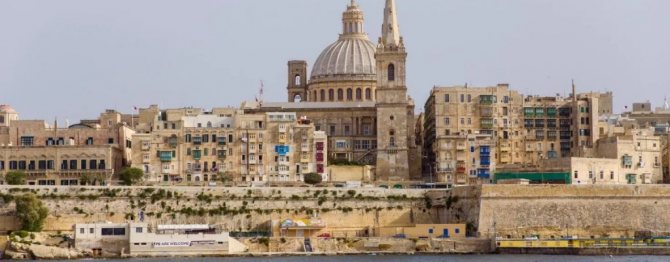
You can move to some countries that occupy leading positions in the rankings of living standards using the citizenship by investment program. The ranking of the TOP 5 countries with a high standard of living and having investment programs is as follows:
- Malta
- Austria
- Cyprus
- Greece
- Montenegro.
Malta. It ranks 28th in the Human Development Index. Permanent residence in Malta can be obtained within 3 to 9 months by choosing a convenient investment method:
- In government bonds (minimum amount – 250 thousand euros).
- Purchase of real estate (from 550 thousand euros).
- Real estate rental (from 330 thousand euros).
Maltese citizenship can only be obtained after obtaining residence permit status. An investor can also choose a convenient way to invest funds:
- Non-refundable contribution (from 650 thousand euros to a government fund, from 150,000 euros to government bonds).
- Purchase of real estate (from 1,158,200 euros).
- Property rental (from 888,200 euros).
Austria. Austria, being 5th in the IQL and 8th in the HDI, also offers a residence permit/citizenship for contribution to the economy. Only 450 investors can use the program in 1 year. In order to obtain citizenship of a country, it is necessary to invest at least 8 million euros in its economy. Against the background of these conditions, a residence permit in Austria looks more attractive. To do this, it is enough to confirm the availability of funds in a bank account to live in the country (the status does not imply work or creation of a business):
- For one investor – from 21,000 euros.
- For a married couple – from 31,500 euros.
Cyprus. According to the IQL, Cyprus is in 33rd place. However, his program is considered one of the safest, most popular and attractive in the world. The country allows a foreign investor to obtain a residence permit, and until November 1, 2021, non-residents could also count on receiving citizenship for their contribution to the economy. Permanent residence in Cyprus can be obtained for the purchase of real estate in the amount of 300 thousand euros or for placing a deposit in a bank in the amount of 30 thousand euros.
Greece. According to the IQL, Greece is in 43rd place, and in the HDI – 32nd. The golden visa of this country is very attractive - to obtain the status of a Greek residence permit, you need to invest an amount of 250 thousand euros in real estate.
Montenegro. Montenegro, ranked 48th in the HDI, allows foreigners to take advantage of the economic citizenship program and receive a passport in six months. According to its terms, the candidate must contribute 100 thousand euros in the form of a subsidy to the government fund, as well as invest in the construction of tourist facilities:
- In the north of the country - from 250 thousand euros.
- In the south of the country – from 450 thousand euros.
Rating of quality of life in countries of the world: is it so important?

The leading positions of countries in terms of level and quality of life play an important role when choosing a “second home”. After all, a change of place of residence must be justified. Many European countries, especially Scandinavian countries, have been leading many world rankings for several years. Citizenship investment programs operating in some of them will allow you to start using all the advantages of the country as quickly and easily as possible.
